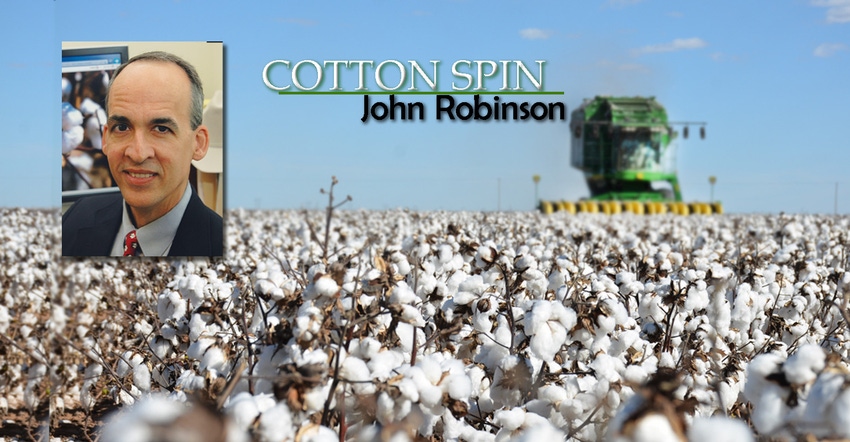
USDA’s July World Agricultural Supply and Demand Estimates report saw few changes to the old and new crop cotton balance sheets. The old crop numbers were largely unchanged from the June estimates, with the exception of adding 200,000 bales of U.S. cotton exports. This went straight to the bottom line and lowered projected old crop ending stocks from 7.3 to 7.1 million bales.
I would still summarize all these old crop adjustments as neutral/helpful adjustments to otherwise bearish ending stock levels.
There were more changes, but few surprises, in the July WASDE new crop numbers. USDA assumed the 12.2 million planted estimate, which they combined with historical average abandonment (16%) and yield (820 pounds per acre) gives a 17.5 million bale crop, so they effectively cut out 2 million bales of production, month over month.
See, WHEAT SCOOPS: Wheat yield may be more important than protein premium
With 200,000 fewer bales of carry-in and a million fewer bales of new crop exports (from fewer exportable surpluses), the bottom line was a large 1.8 million bale decrease in U.S. new crop ending stocks, to 6.8 million. The adjustment was price supportive, but the levels are still bearish.
There weren’t a lot of changes to the new crop world numbers, compared to June. The monthly adjustments to U.S. production, exports, and ending stocks explained most of the changes in those categories on the world balance sheet.
Looking ahead, the cotton market has entered the last phase of weather market influence. The July WASDE is the last report in which new crop production is based on historical average yield and abandonment.
It has been very hot and dry in the southern Plains, and a large amount of dryland acreage has likely been plowed up. The effects of the heat and dryness on irrigated yields are probably bad, but quantitatively unknown, so there is room for lots of speculation, figuratively and literally/financially, about these variables.
But starting in August, historical averages will be replaced with yield and abandonment estimates based on field sampling, certified planted acreage, and insurance claims.
The September WASDE sometimes confirms, and sometimes contradicts, the August data. The combination of these reports typically give us a benchmark of U.S. production that spells the end of the weather market influence. That is, the market premium from the uncertainty of the size of the U.S. crop begins to fade as the supply picture gets clearer.
The marketing implication of all this is to view near term rallies in Dec '20 ICE cotton futures as a hedging or selling opportunity. But don’t wait too long.
I think there is room to cut another million bales out of U.S. production. It would cut into exports, and it still comes with 7 million bales of carry-in. So it could still leave us with around 6 million bales of ending stocks.
While that’s certainly not as bad as 8.0 million bales, it isn’t good. Fundamentally, it is a recipe for ICE futures to trade between the upper 50s and the mid/upper 60s, with the latter potentially coming with the peak of the weather premium.
For additional thoughts on these and other cotton marketing topics, please visit my weekly on-line newsletter at http://agrilife.org/cottonmarketing/.
About the Author(s)
You May Also Like




